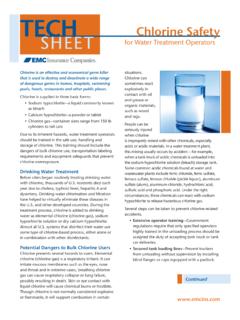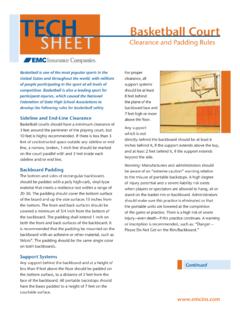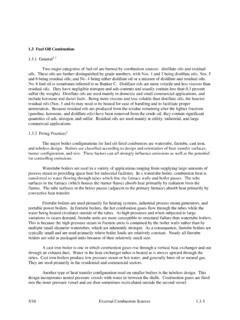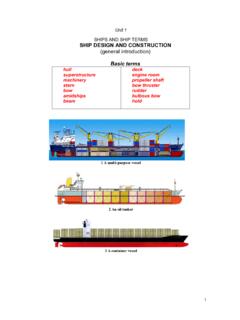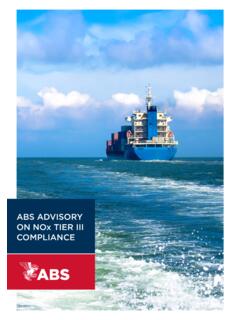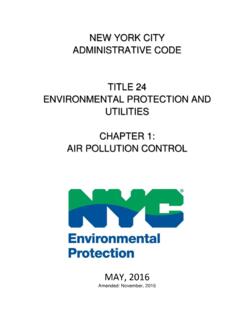Transcription of EPA Tier 4 Regulations for Diesel Generators - EMC Ins
1 EPA Tier 4 regulations for diesel generators Federal EPA Tier 4 Resources: Final EPA Rule Fact sheet (short form) link: EPA Final Rule Fact Sheet Final EPA ruling (long form) on the National Emission Standards for Hazardous Air Pollutants (NESHAP) for Reciprocating Internal Combustion Engines (RICE) link: EPA Final Rule - Existing Engines Final EPA ruling (long form) for RICE link: EPA Final Rule - New Engines (2006) Background: As the result of the Clean Air Act (1970), the Environmental Protection Agency (EPA) began setting standards for Diesel engine emissions beginning with mobile on-highway engines. In 1990, the Clean Air Act was amended with a focus on specific pollution criteria include some of the following: nitrogen Oxide (NOX), carbon monoxide (CO), sulfur dioxide (SO2), ozone, and particulate matter (PM).
2 In 1996, the EPA adopted the first set of emissions standards referred to as Tier I. In 1998, more stringent Tier 2 standards were adopted by the EPA. Between years 2005 2008, Tier 3 standards were phased into implementation. In 2008, Tier 4 standards began phased implementation. In December 2008, the Court of Appeals ruled that EPA emissions standards must address all phases of operation including engine startup, shutdown, and malfunction. In February 2010, the EPA issued a final rule on emissions standards for Diesel stationary reciprocating internal combustion engines (RICE). It is estimated that Tier 4 Final compliant engines will produce over 90% less NOX and over 90% less particulate matter (PM) when compared with Tier 1 engines.
3 Tier 4 Regulation Summary: On January 1, 2011, Tier 4 Interim (T4i) standards went into effect. Tier 4 Final standards require additional reductions in emissions. Implementation deadlines are phased in between 2013 and 2015. Deadlines depend on engine size. Existing engines constructed prior to a certain date, depending on the engine size, are required to install emissions treatment equipment and perform testing. The Tier 4 emissions standards apply to engines for EPA defined non-emergencystationary applications. Generators classified as emergency standby are exemptfrom Tier 4 Standards regarding emissions but are limited in the amount of timethey can operate in a non-emergency situation such as testing or maintenance.
4 Generators classified as EPA defined emergency stationary application haveadditional maintenance and record-keeping example of a non-emergency stationary application would be producingpower for normal operations of a facility or supplying power to an electricgrid for utility peak example of EPA defined emergency stationary application would be forproducing power for critical networks or equipment when electric power fromthe normal source is interrupted. Please Note: State or local Regulations may further restrict allowances onemergency standby use. Check with State and local air boards for Power Generation Facilities Response: Some facilities purchased Tier 2 equipment during this past year with plans toinstall the units within the next 2 years, prior to Tier 4 Final deadlines, and thenretire older engines.
5 Some facilities have already installed Tier 2 equipment this last year or arecurrently in the process of completing construction or installation and intend toretire their older engines. Some facilities are reviewing changing classification to an EPA defined emergencystationary application from a non-emergency stationary class. Some facilities are planning to install necessary emissions after-treatmentequipment on their older engines to bring them into Tier 4 compliance. Some facilities have delayed action pending a review of standards Vendor Resources: Caterpillar ( ) Cummins ( ) Fairbanks Morse ( ) DKT

